BLM21PG221SN1D 220 Ohms @ 100 MHz Tape & Reel: Datasheet, Application, and Equivalents
FERRITE BEAD 220 OHM 0805 1LN
The Murata BLM21PG221SN1D is an EMIFIL chip ferrite bead for suppressing high-frequency noise in power line applications. This article is going to introduce applications, features, and more details about BLM21PG221SN1D.
- Description of BLM21PG221SN1D
- BLM21PG221SN1D Features
- Specifications
- BLM21PG221SN1D Equivalent Circuit
- BLM21PG221SN1D 3D Model
- BLM21PG221SN1D Application
- Limitation of Applications
- BLM21PG221SN1D VS BLM18PG221SN1D
- BLM21PG221SN1D Equivalents
- BLM21PG221SN1D Manufacturer
- Datasheet PDF
- Popularity by Region
- Parts with Similar Specs
Description of BLM21PG221SN1D
The Murata BLM21PG221SN1D is an EMIFIL chip ferrite bead for suppressing high-frequency noise in power line applications. These chip ferrite beads are designed for reducing the possibility of resonance to provide undistorted signal waveform. EMIFIL chip ferrite beads do not require connection to the ground so they are effectively used in circuits without stable ground lines. The nickel barrier structure of the external electrodes provides excellent solder heat resistance. BLM21PG series can be used in high current circuits due to its low DC resistance and can match power lines to a maximum of 6A DC.
BLM21PG221SN1D Features
1. The chip ferrite beads BLM series is designed to function nearly as a resistor at noise frequencies, which greatly reduces the possibility of resonance and leaves signal waveforms undistorted. BLM series is effective in circuits without stable ground lines because the BLM series does not need a connection to the ground.
2. The nickel barrier structure of the external electrodes provides excellent solder heat resistance.
3.BLM_P series can be used in high current circuits due to its low DC resistance. It can match power lines to a maximum of 6A DC.
Specifications
- TypeParameter
- Lifecycle Status
Lifecycle Status refers to the current stage of an electronic component in its product life cycle, indicating whether it is active, obsolete, or transitioning between these states. An active status means the component is in production and available for purchase. An obsolete status indicates that the component is no longer being manufactured or supported, and manufacturers typically provide a limited time frame for support. Understanding the lifecycle status is crucial for design engineers to ensure continuity and reliability in their projects.
IN PRODUCTION (Last Updated: 1 month ago) - Factory Lead Time7 Weeks
- Contact Plating
Contact plating (finish) provides corrosion protection for base metals and optimizes the mechanical and electrical properties of the contact interfaces.
Tin - Mounting Type
The "Mounting Type" in electronic components refers to the method used to attach or connect a component to a circuit board or other substrate, such as through-hole, surface-mount, or panel mount.
Surface Mount - Package / Case
refers to the protective housing that encases an electronic component, providing mechanical support, electrical connections, and thermal management.
0805 (2012 Metric) - Number of Pins2
- Material
In electronic components, the parameter "Material" refers to the substance or material used in the construction of the component. The choice of material is crucial as it directly impacts the component's performance, durability, and other characteristics. Different materials have varying properties such as conductivity, resistance to heat, corrosion resistance, and mechanical strength, which determine how the component functions in a circuit. Common materials used in electronic components include metals like copper and aluminum, semiconductors like silicon, insulators like ceramics and plastics, and various alloys. Selecting the appropriate material is essential for designing reliable and efficient electronic components.
Ferrite, Steel - Core Material
Core materials are produced in a variety of forms including end-grain balsa wood, PVC foam, urethane foam, non-woven core fabrics, and various types of honeycomb materials.
Ferrite - Operating Temperature
The operating temperature is the range of ambient temperature within which a power supply, or any other electrical equipment, operate in. This ranges from a minimum operating temperature, to a peak or maximum operating temperature, outside which, the power supply may fail.
-55°C~125°C - Packaging
Semiconductor package is a carrier / shell used to contain and cover one or more semiconductor components or integrated circuits. The material of the shell can be metal, plastic, glass or ceramic.
Tape & Reel (TR) - Series
In electronic components, the "Series" refers to a group of products that share similar characteristics, designs, or functionalities, often produced by the same manufacturer. These components within a series typically have common specifications but may vary in terms of voltage, power, or packaging to meet different application needs. The series name helps identify and differentiate between various product lines within a manufacturer's catalog.
EMIFIL®, BLM21 - Size / Dimension
In electronic components, the parameter "Size / Dimension" refers to the physical dimensions of the component, such as its length, width, and height. These dimensions are crucial for determining how the component will fit into a circuit or system, as well as for ensuring compatibility with other components and the overall design requirements. The size of a component can also impact its performance characteristics, thermal properties, and overall functionality within a given application. Engineers and designers must carefully consider the size and dimensions of electronic components to ensure proper integration and functionality within their designs.
0.079Lx0.049W 2.00mmx1.25mm - Tolerance
In electronic components, "tolerance" refers to the acceptable deviation or variation from the specified or ideal value of a particular parameter, such as resistance, capacitance, or voltage. It indicates the range within which the actual value of the component can fluctuate while still being considered acceptable for use in a circuit. Tolerance is typically expressed as a percentage or a specific value and is important for ensuring the accuracy and reliability of electronic devices. Components with tighter tolerances are more precise but may also be more expensive. It is crucial to consider tolerance when selecting components to ensure proper functionality and performance of the circuit.
25% - JESD-609 Code
The "JESD-609 Code" in electronic components refers to a standardized marking code that indicates the lead-free solder composition and finish of electronic components for compliance with environmental regulations.
e3 - Pbfree Code
The "Pbfree Code" parameter in electronic components refers to the code or marking used to indicate that the component is lead-free. Lead (Pb) is a toxic substance that has been widely used in electronic components for many years, but due to environmental concerns, there has been a shift towards lead-free alternatives. The Pbfree Code helps manufacturers and users easily identify components that do not contain lead, ensuring compliance with regulations and promoting environmentally friendly practices. It is important to pay attention to the Pbfree Code when selecting electronic components to ensure they meet the necessary requirements for lead-free applications.
yes - Part Status
Parts can have many statuses as they progress through the configuration, analysis, review, and approval stages.
Active - Moisture Sensitivity Level (MSL)
Moisture Sensitivity Level (MSL) is a standardized rating that indicates the susceptibility of electronic components, particularly semiconductors, to moisture-induced damage during storage and the soldering process, defining the allowable exposure time to ambient conditions before they require special handling or baking to prevent failures
1 (Unlimited) - Termination
Termination in electronic components refers to the practice of matching the impedance of a circuit to prevent signal reflections and ensure maximum power transfer. It involves the use of resistors or other components at the end of transmission lines or connections. Proper termination is crucial in high-frequency applications to maintain signal integrity and reduce noise.
SMD/SMT - ECCN Code
An ECCN (Export Control Classification Number) is an alphanumeric code used by the U.S. Bureau of Industry and Security to identify and categorize electronic components and other dual-use items that may require an export license based on their technical characteristics and potential for military use.
EAR99 - Resistance
Resistance is a fundamental property of electronic components that measures their opposition to the flow of electric current. It is denoted by the symbol "R" and is measured in ohms (Ω). Resistance is caused by the collisions of electrons with atoms in a material, which generates heat and reduces the flow of current. Components with higher resistance will impede the flow of current more than those with lower resistance. Resistance plays a crucial role in determining the behavior and functionality of electronic circuits, such as limiting current flow, voltage division, and controlling power dissipation.
50mOhm - HTS Code
HTS (Harmonized Tariff Schedule) codes are product classification codes between 8-1 digits. The first six digits are an HS code, and the countries of import assign the subsequent digits to provide additional classification. U.S. HTS codes are 1 digits and are administered by the U.S. International Trade Commission.
8504.50.80.00 - Packing Method
The packing method in electronic components refers to the technique used to package and protect the component during shipping and handling. It encompasses various forms including tape and reel, tray, tube, or bulk packaging, each suited for different types of components and manufacturing processes. The choice of packing method can affect the ease of handling, storage, and the efficiency of assembly in automated processes. Additionally, it plays a crucial role in ensuring the reliability and integrity of the components until they are used in electronic devices.
TAPE AND REEL - Shielding
Shielding in electronic components refers to the practice of enclosing or surrounding sensitive electronic circuits or components with a conductive material to protect them from electromagnetic interference (EMI) or radio frequency interference (RFI). The shielding material acts as a barrier that blocks or absorbs unwanted electromagnetic signals, preventing them from affecting the performance of the electronic device. Shielding can be achieved using materials such as metal enclosures, conductive coatings, or shielding tapes. Proper shielding is essential in electronic design to ensure the reliable operation of electronic devices in environments where electromagnetic interference is present.
Unshielded - Number of Functions1
- Depth
In electronic components, "Depth" typically refers to the measurement of the distance from the front to the back of the component. It is an important parameter to consider when designing or selecting components for a project, as it determines how much space the component will occupy within a circuit or device. The depth of a component can impact the overall size and layout of the circuit board or enclosure in which it will be installed. It is usually specified in millimeters or inches and is crucial for ensuring proper fit and functionality within the intended application.
1.25mm - Construction
Construction in electronic components refers to the design and materials used in the manufacturing of the components. It encompasses the physical structure, arrangement, and integration of various parts like substrates, conductors, and insulators. The construction impacts the performance, reliability, and thermal properties of the component, influencing how it interacts with electrical signals and other components in a circuit. Different construction techniques can also affect the size, weight, and cost of the electronic component.
Chip Bead - Current Rating
Current rating is the maximum current that a fuse will carry for an indefinite period without too much deterioration of the fuse element.
2A - Frequency
In electronic components, the parameter "Frequency" refers to the rate at which a signal oscillates or cycles within a given period of time. It is typically measured in Hertz (Hz) and represents how many times a signal completes a full cycle in one second. Frequency is a crucial aspect in electronic components as it determines the behavior and performance of various devices such as oscillators, filters, and communication systems. Understanding the frequency characteristics of components is essential for designing and analyzing electronic circuits to ensure proper functionality and compatibility with other components in a system.
100MHz - Military Standard
Military Standard in electronic components refers to a set of guidelines and specifications established by the military for the design, manufacturing, and testing of electronic devices used in military applications. These standards ensure that the components meet specific requirements for reliability, durability, performance, and environmental conditions. Components that meet military standards are often more rugged and capable of withstanding harsh operating conditions such as extreme temperatures, vibrations, and electromagnetic interference. Adhering to military standards helps to ensure the quality and consistency of electronic components used in critical military systems and applications.
Not - Case Code (Metric)
Case Code (Metric) in electronic components refers to a standardized system that specifies the dimensions of surface-mount devices (SMD) in millimeters, consisting of a four-digit number where the first two digits represent the width and the last two digits represent the height of the component, measured in tenths of a millimeter. The metric case codes are standardized by organizations such as the EIA and IEC, and are often compared to the Imperial code which uses inches, allowing for easier identification and selection of components across different regions and industries. This coding system is widely used in the design and manufacturing of electronic devices, particularly in applications requiring compact and efficient component layouts, and is essential for engineers and designers to ensure proper component selection and facilitate the assembly process in electronic manufacturing.
2012 - Case Code (Imperial)
The term "Case Code (Imperial)" in electronic components refers to a standardized system used to specify the physical dimensions and package types of components, particularly capacitors and resistors. This code helps manufacturers and engineers identify the size and form factor of the component, ensuring compatibility with circuit designs and PCB layouts. In the context of electronic components, the Case Code (Imperial) typically follows a numerical format that indicates the length and width of the component in inches. For example, a Case Code of 1206 signifies a component that measures 0.12 inches by 0.06 inches. This coding system is essential for selecting the correct components for specific applications, as it provides a quick reference to the physical characteristics of the part, including its footprint and mounting style.
0805 - Test Frequency
a statistical procedure for assessing data that contain counts or the numbers of occurrences of various categories or classes.
100MHz - Impedance
In electrical engineering, impedance is the opposition to alternating current presented by the combined effect of resistance and reactance in a circuit.
220Ohm - Current
In electronic components, "Current" refers to the flow of electric charge through a conductor or semiconductor material. It is measured in amperes (A) and represents the rate at which electric charge is moving past a specific point in a circuit. Current is a crucial parameter in electronics as it determines the amount of power being consumed or delivered by a component. Understanding and controlling current is essential for designing and operating electronic circuits efficiently and safely. In summary, current is a fundamental electrical quantity that plays a key role in the functionality and performance of electronic components.
2A - Max DC Current
Max DC Current refers to the maximum amount of direct current (DC) that an electronic component can safely handle without being damaged. This parameter is crucial for determining the operational limits of the component and ensuring that it functions within its specified range. Exceeding the maximum DC current rating can lead to overheating, performance degradation, or even permanent damage to the component. It is important to carefully consider this parameter when designing circuits or selecting components to ensure reliable and safe operation.
2A - Filter Type
Filter Type in electronic components refers to the classification of filters based on their frequency response characteristics. Common types include low-pass, high-pass, band-pass, and band-stop filters, each serving different functions in signal processing. Low-pass filters allow signals below a certain cutoff frequency to pass while attenuating higher frequencies, whereas high-pass filters do the opposite. Band-pass filters permit frequencies within a specific range, while band-stop filters block frequencies within a designated range. The choice of filter type influences the performance and behavior of electronic circuits in various applications.
Power Line - DC Current
DC current refers to the flow of electric charge in a circuit in a constant, unidirectional manner. It is the steady current that flows through a circuit without changing direction over time. DC current is typically measured in amperes (A) and is essential for powering electronic components such as resistors, capacitors, and transistors. Understanding the DC current rating of a component is crucial for ensuring proper functionality and preventing damage due to overcurrent. It is important to consider the maximum DC current that a component can handle to avoid overheating and potential failure.
2A - Number of Lines1
- DC Resistance (DCR) (Max)
DC Resistance (DCR) (Max) in electronic components refers to the maximum allowable direct current (DC) resistance of a component, typically an inductor or a resistor. It represents the highest resistance value that the component can have when measured under DC conditions.
45mOhm - Impedance @ Frequency
Impedance @ Frequency in electronic components refers to the measurement of a component's impedance at a specific frequency. Impedance is a complex quantity that combines resistance and reactance, and it varies with frequency due to the influence of both inductive and capacitive elements within the component.
220Ohm @ 100MHz - Height850μm
- REACH SVHC
The parameter "REACH SVHC" in electronic components refers to the compliance with the Registration, Evaluation, Authorization, and Restriction of Chemicals (REACH) regulation regarding Substances of Very High Concern (SVHC). SVHCs are substances that may have serious effects on human health or the environment, and their use is regulated under REACH to ensure their safe handling and minimize their impact.Manufacturers of electronic components need to declare if their products contain any SVHCs above a certain threshold concentration and provide information on the safe use of these substances. This information allows customers to make informed decisions about the potential risks associated with using the components and take appropriate measures to mitigate any hazards.Ensuring compliance with REACH SVHC requirements is essential for electronics manufacturers to meet regulatory standards, protect human health and the environment, and maintain transparency in their supply chain. It also demonstrates a commitment to sustainability and responsible manufacturing practices in the electronics industry.
No SVHC - Radiation Hardening
Radiation hardening is the process of making electronic components and circuits resistant to damage or malfunction caused by high levels of ionizing radiation, especially for environments in outer space (especially beyond the low Earth orbit), around nuclear reactors and particle accelerators, or during nuclear accidents or nuclear warfare.
No - RoHS Status
RoHS means “Restriction of Certain Hazardous Substances” in the “Hazardous Substances Directive” in electrical and electronic equipment.
ROHS3 Compliant - Lead Free
Lead Free is a term used to describe electronic components that do not contain lead as part of their composition. Lead is a toxic material that can have harmful effects on human health and the environment, so the electronics industry has been moving towards lead-free components to reduce these risks. Lead-free components are typically made using alternative materials such as silver, copper, and tin. Manufacturers must comply with regulations such as the Restriction of Hazardous Substances (RoHS) directive to ensure that their products are lead-free and environmentally friendly.
Lead Free
BLM21PG221SN1D Equivalent Circuit

BLM21PG221SN1D Equivalent Circuit
BLM21PG221SN1D 3D Model

BLM21PG221SN1D Symbol
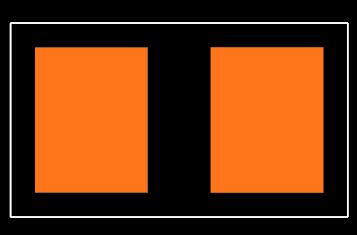
BLM21PG221SN1D Footprint

BLM21PG221SN1D 3D Model
BLM21PG221SN1D Application
Industrial
Power Management
Consumer Electronics
Portable Devices
Limitation of Applications
Aircraft equipment
Aerospace equipment
Undersea equipment
Power plant control equipment
Medical equipment
Disaster prevention/crime prevention equipment
Traffic signal equipment
Transportation equipment (trains,ships,etc.)
Data-processing equipment
Applications of similar complexity and /or reliability requirements to the applications listed in the above
BLM21PG221SN1D VS BLM18PG221SN1D
| BLM21PG221SN1D | BLM18PG221SN1D | |
| Factory Lead Time | 6 Weeks | 7 Weeks |
| Package / Case | 0805 (2012 Metric) | 0603 (1608 Metric) |
| Resistance | 50mOhm | 100mOhm |
| DC Current | 2A | 1.4A |
| Max DC Current | 2A | 1.4A |
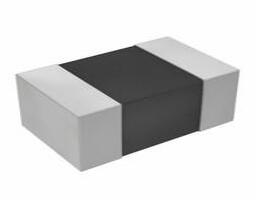 |  |
Conclusion: They are similar in many different aspects, so they can replace each other.
BLM21PG221SN1D Equivalents
BLM21PG221SN1D Manufacturer
Murata is a global leader in the design, manufacture, and supply of advanced electronic materials, leading-edge electronic components, and multi-functional, high-density modules. Murata innovations can be found in a wide range of applications from mobile phones to home appliances, and automotive applications to energy management systems and healthcare devices.
Datasheet PDF
- Datasheets :
- ReachStatement :
Popularity by Region
Parts with Similar Specs
- ImagePart NumberManufacturerImpedanceTest FrequencyCurrent RatingNumber of LinesNumber of PinsRoHS StatusLead FreeNumber of FunctionsView Compare
BLM21PG221SN1D
220 Ω
100 MHz
2 A
1
2
ROHS3 Compliant
Lead Free
1
220 Ω
100 MHz
1.4 A
1
2
ROHS3 Compliant
Lead Free
1
220 Ω
100 MHz
2.5 A
1
2
ROHS3 Compliant
Lead Free
1
220 Ω
100 MHz
1.4 A
1
-
ROHS3 Compliant
Lead Free
1
220 Ω
100 MHz
2 A
1
2
ROHS3 Compliant
Lead Free
1
How many pins of BLM21PG221SN1D ?
2 pins.
What’s the operating temperature of BLM21PG221SN1D?
-55°C~125°C.
![LM2901D Analog Comparator Overview [Video]](https://res.utmel.com/Images/Article/8ab44ea1-170a-4539-a73d-5ee8c487aac2.png) LM2901D Analog Comparator Overview [Video]
LM2901D Analog Comparator Overview [Video]14 August 20241181
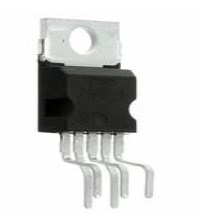 TDA2030 Audio Amplifier: Datasheet, Pinout and Equivalents
TDA2030 Audio Amplifier: Datasheet, Pinout and Equivalents15 September 202146780
 STM32G070CBT6: Overview, Features, and Datasheet
STM32G070CBT6: Overview, Features, and Datasheet11 December 20231690
 STM32F302R6T6 Microcontroller: 72MHz, 64 KB Flash and 64-Pin LQFP
STM32F302R6T6 Microcontroller: 72MHz, 64 KB Flash and 64-Pin LQFP13 January 2022299
 74HC74 Dual D Flip-Flop: Datasheet pdf, Pinout and Flip-Flop Diagram
74HC74 Dual D Flip-Flop: Datasheet pdf, Pinout and Flip-Flop Diagram17 December 202114233
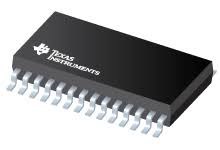 LM5175QPWPTQ1 DC/DC Controller: Pinout, Specification, and Datasheet
LM5175QPWPTQ1 DC/DC Controller: Pinout, Specification, and Datasheet01 July 20211561
 ADP7118 Linear Regulator: Features, Pinout and Datasheet
ADP7118 Linear Regulator: Features, Pinout and Datasheet14 December 2021644
 Texas Instruments MSP430G2x13 and MSP430G2x53: Ultra-Low-Power Mixed Signal Microcontrollers
Texas Instruments MSP430G2x13 and MSP430G2x53: Ultra-Low-Power Mixed Signal Microcontrollers29 February 202492
 Role of Direct Memory Access in Modern Computing
Role of Direct Memory Access in Modern Computing12 November 20243202
 What is Network Topology?
What is Network Topology?23 December 20213499
 Inverter Introduction: Structures, Working Principles and Features
Inverter Introduction: Structures, Working Principles and Features18 February 202234352
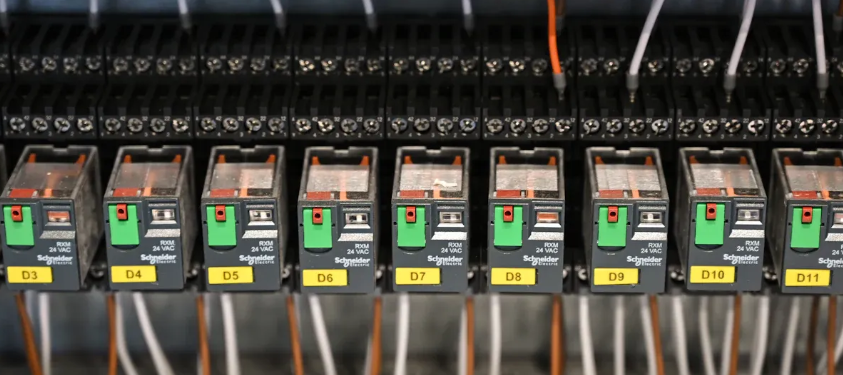 Wiring and Mounting Photoelectric Sensors in 2025
Wiring and Mounting Photoelectric Sensors in 202515 July 2025621
 What is a Microcontroller?
What is a Microcontroller?30 October 2025113804
 What is Comparator?
What is Comparator?11 April 20225676
![How a CPU is made? [HD Graphics]](https://res.utmel.com/Images/Article/d7470283-3897-4776-abd1-e7eef60aff17.jpg) How a CPU is made? [HD Graphics]
How a CPU is made? [HD Graphics]19 January 202213350
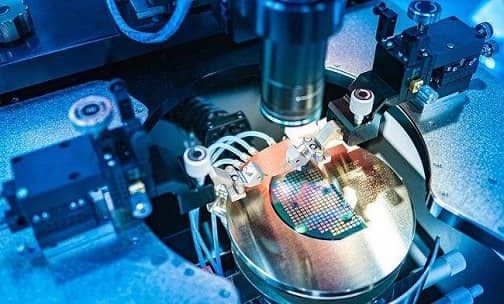 Trends in the Semiconductor Industry in 2022
Trends in the Semiconductor Industry in 202214 February 20222487
Murata Electronics
In Stock: 151463
United States
China
Canada
Japan
Russia
Germany
United Kingdom
Singapore
Italy
Hong Kong(China)
Taiwan(China)
France
Korea
Mexico
Netherlands
Malaysia
Austria
Spain
Switzerland
Poland
Thailand
Vietnam
India
United Arab Emirates
Afghanistan
Åland Islands
Albania
Algeria
American Samoa
Andorra
Angola
Anguilla
Antigua & Barbuda
Argentina
Armenia
Aruba
Australia
Azerbaijan
Bahamas
Bahrain
Bangladesh
Barbados
Belarus
Belgium
Belize
Benin
Bermuda
Bhutan
Bolivia
Bonaire, Sint Eustatius and Saba
Bosnia & Herzegovina
Botswana
Brazil
British Indian Ocean Territory
British Virgin Islands
Brunei
Bulgaria
Burkina Faso
Burundi
Cabo Verde
Cambodia
Cameroon
Cayman Islands
Central African Republic
Chad
Chile
Christmas Island
Cocos (Keeling) Islands
Colombia
Comoros
Congo
Congo (DRC)
Cook Islands
Costa Rica
Côte d’Ivoire
Croatia
Cuba
Curaçao
Cyprus
Czechia
Denmark
Djibouti
Dominica
Dominican Republic
Ecuador
Egypt
El Salvador
Equatorial Guinea
Eritrea
Estonia
Eswatini
Ethiopia
Falkland Islands
Faroe Islands
Fiji
Finland
French Guiana
French Polynesia
Gabon
Gambia
Georgia
Ghana
Gibraltar
Greece
Greenland
Grenada
Guadeloupe
Guam
Guatemala
Guernsey
Guinea
Guinea-Bissau
Guyana
Haiti
Honduras
Hungary
Iceland
Indonesia
Iran
Iraq
Ireland
Isle of Man
Israel
Jamaica
Jersey
Jordan
Kazakhstan
Kenya
Kiribati
Kosovo
Kuwait
Kyrgyzstan
Laos
Latvia
Lebanon
Lesotho
Liberia
Libya
Liechtenstein
Lithuania
Luxembourg
Macao(China)
Madagascar
Malawi
Maldives
Mali
Malta
Marshall Islands
Martinique
Mauritania
Mauritius
Mayotte
Micronesia
Moldova
Monaco
Mongolia
Montenegro
Montserrat
Morocco
Mozambique
Myanmar
Namibia
Nauru
Nepal
New Caledonia
New Zealand
Nicaragua
Niger
Nigeria
Niue
Norfolk Island
North Korea
North Macedonia
Northern Mariana Islands
Norway
Oman
Pakistan
Palau
Palestinian Authority
Panama
Papua New Guinea
Paraguay
Peru
Philippines
Pitcairn Islands
Portugal
Puerto Rico
Qatar
Réunion
Romania
Rwanda
Samoa
San Marino
São Tomé & Príncipe
Saudi Arabia
Senegal
Serbia
Seychelles
Sierra Leone
Sint Maarten
Slovakia
Slovenia
Solomon Islands
Somalia
South Africa
South Sudan
Sri Lanka
St Helena, Ascension, Tristan da Cunha
St. Barthélemy
St. Kitts & Nevis
St. Lucia
St. Martin
St. Pierre & Miquelon
St. Vincent & Grenadines
Sudan
Suriname
Svalbard & Jan Mayen
Sweden
Syria
Tajikistan
Tanzania
Timor-Leste
Togo
Tokelau
Tonga
Trinidad & Tobago
Tunisia
Turkey
Turkmenistan
Turks & Caicos Islands
Tuvalu
U.S. Outlying Islands
U.S. Virgin Islands
Uganda
Ukraine
Uruguay
Uzbekistan
Vanuatu
Vatican City
Venezuela
Wallis & Futuna
Yemen
Zambia
Zimbabwe















